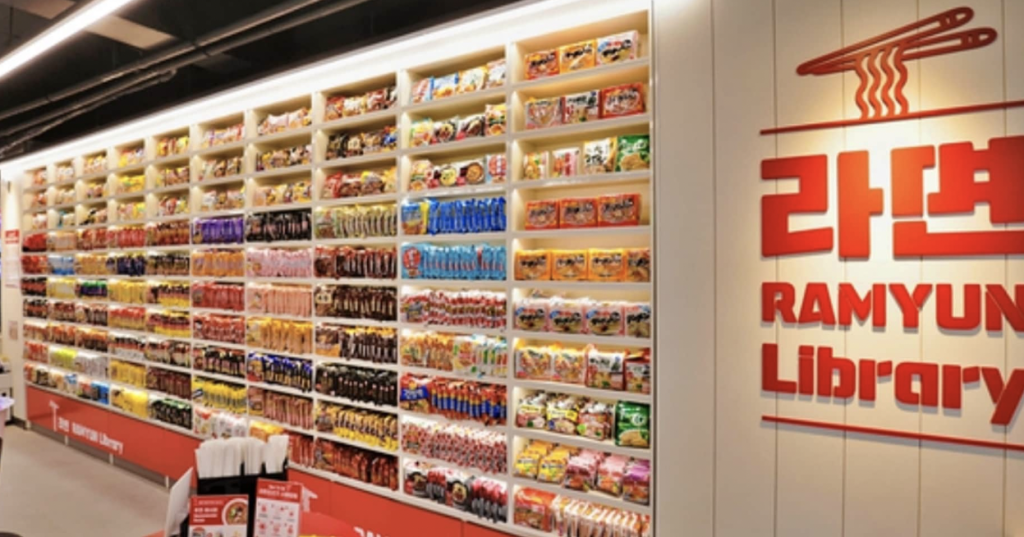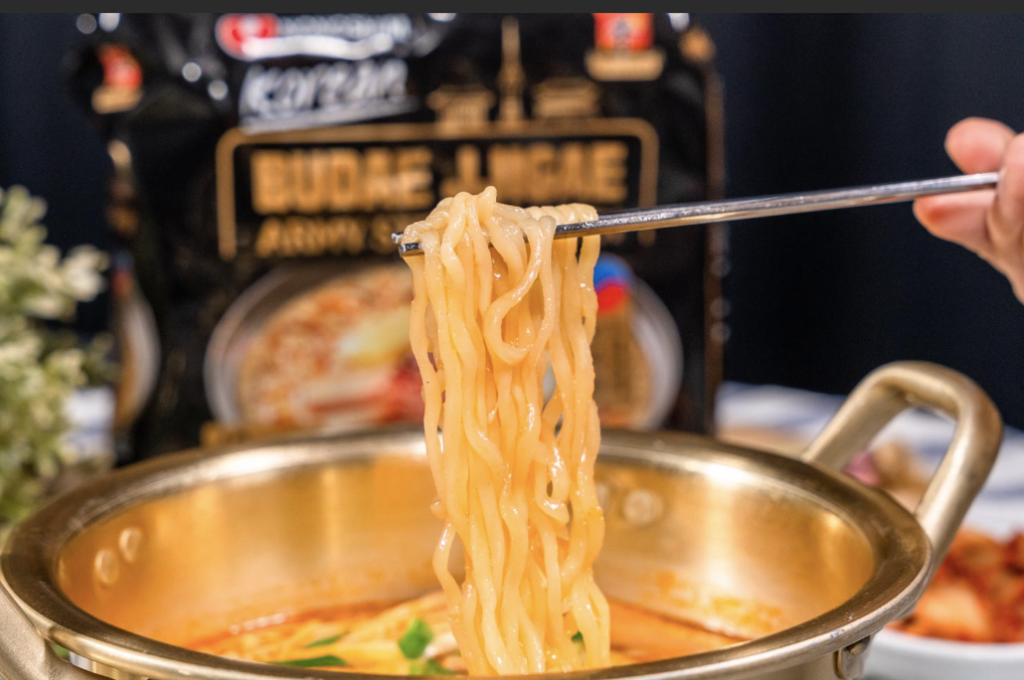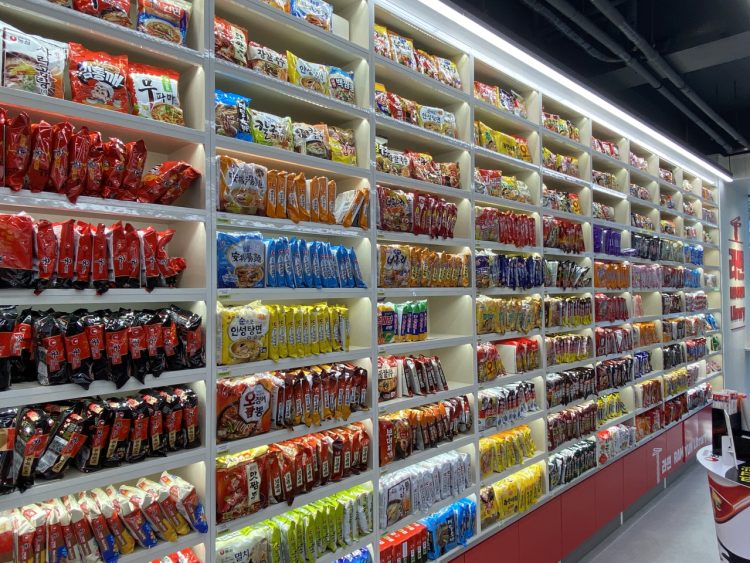In the bustling streets of Seoul, a novel concept has sprouted within the walls of a CU convenience store, transforming the simple act of noodle consumption into an immersive cultural encounter. This establishment, which first opened its doors adjacent to Hongik University, has now blossomed into a nationwide phenomenon, with the brand announcing plans to proliferate its “Ramyun Library” across South Korea. Here, amidst the urban tapestry of Seoul, one can indulge in a symphony of flavors, each variety of ramyun meticulously cataloged as if they were treasured volumes in a grand bibliothèque of culinary delight.

As I ventured into this noodle sanctuary around 5:30 PM, the venue was already abuzz with patrons eagerly unwrapping their chosen treats. The store’s entrance greets visitors with an entire wall dedicated to ramyun, arranged with the precision and care of a librarian’s touch. Rows upon rows of ramyun, each representing a different flavor profile and brand, are displayed from top to bottom, allowing noodle aficionados to swiftly pinpoint their desired selection. According to the Korea Tourism Organization, this library boasts over 100 varieties of ramyun, including over 90 domestically produced flavors such as the fiery stir-fried noodles and the beloved Shin Ramyun. This selection is a staggering threefold increase over the typical convenience store, truly earning its moniker as a “Ramyun Library.”
Adjacent to the ramyun display stands an array of self-service cooking machines and simple dining tables for customers to prepare and enjoy their noodles on-site. Opposite the ramyun shelves, one can find an assortment of additional edibles like vegetables, sausages, and kimbap, perfect complements to the noodle feast. Beyond the ramyun section, the store offers a variety of other goods, akin to those found in any typical convenience store.

The ramyun shelves are not only labeled in Korean but also in English, Chinese, and Japanese, providing detailed descriptions of the price, characteristics, and spiciness of each variety. For those hard-to-reach selections perched high on the shelves, patrons are directed to the other merchandise areas of the store.
Selecting a rich bone broth ramyun priced at 2,200 KRW, slightly above the average supermarket cost, I proceeded to checkout. The cashier inquired whether I’d dine in or take away, and I opted for the in-store experience. I was handed a paper bowl with a barcode for “General Ramyun,” a system that adjusts for different tastes and noodle textures.
Accompanying my ramyun was a small vegetable pack, brimming with bean sprouts, spring onions, and green chili peppers. After placing the contents into the bowl, a simple scan of the barcode at the cooking station prompted the machine to dispense hot water and set the cooking timer. Moments later, the ramyun was perfectly prepared.
It became apparent that the majority of the store’s clientele were foreigners, drawn to this unique spot to immerse themselves in the distinctive “ramyun atmosphere” of Korea, capturing memories through their lenses. This CU convenience store has transcended its commercial roots to become a cultural hotspot, offering a taste of Korea’s beloved noodles and a dash of novelty to the curious and the hungry alike.





















